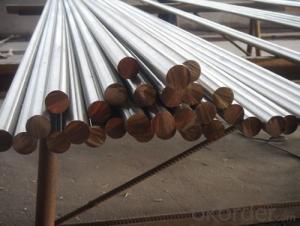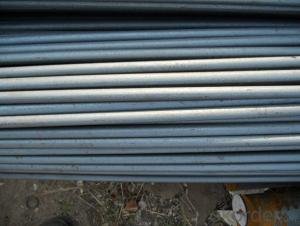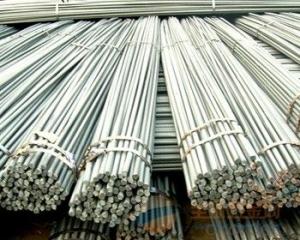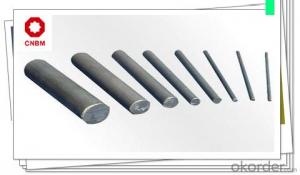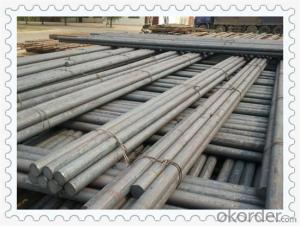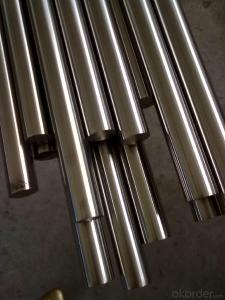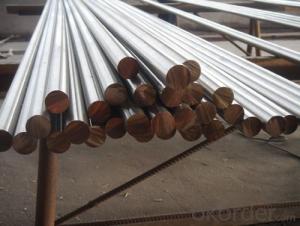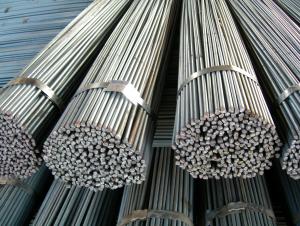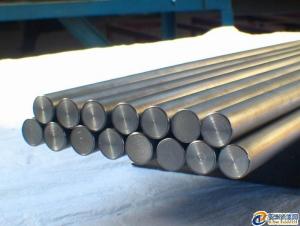HIGH QUALITY HOT ROLLED ROUND BAR Q235 ou Q195
- Loading Port:
- Tianjin
- Payment Terms:
- TT OR LC
- Min Order Qty:
- 25 m.t.
- Supply Capability:
- 20000000 m.t./month
OKorder Service Pledge
OKorder Financial Service
You Might Also Like
Round bar Details:
Brand Name: N-RIVER Place of Origin: Hebei, China Mainland Application: construction, building etcProduct Description:
Specifications of Wire Rod Q235:
Steel Grade: Q235, Standard: GB Diameter: 5.5mm, 6.5mm, 7mm,8mm,9mm,10mm,12mm,14mm
Diameter Tolerance:±0.3mm 6.5mm can be drawing into 2mm/8.0mm can be drawing into 3mm
Chemical Composition:
Please kindly find our chemistry of our material based on Q235 as below for your information
Trademark | Rank | Chemical composition (quality score) % | |||||
C | Si | Mn | S | P | |||
≤ | ≤ | ≤ | |||||
Q235 | A | 0.14-0.22 | 0.30 | 0.30-0.65 | 0.050 | 0.045 | |
Q235 | B | 0.12-0.20 | 0.30 | 0.30-0.70 | 0.045 | 0.045 | |
Trademark | Rank | Pulling Test | |||||
Bend PointΔs/Mpa | Tensile Strength | Elongation Ratioδ5% | |||||
Thickness (Diameter) /MM | Thickness (Diameter) /MM | ||||||
≤16 | 16-40 | ≤16 | 16-40 | ||||
≥ | ≥ | ||||||
Q235 | A | 235 | 225 | 375-500 | 26 | 25 | |
Q235 | B | 235 | 225 | 375-500 | 26 | 25 | |
Usage and Applications of Wire Rod Q235:
After hot-rolled the products shaped into coil and delivery as finished product, including round, square, rectangular, hexagonal and so on. Since most of the products are round, it is generally called wire rod. Carbon steel wire rod is widely used in construction and manufacturing. Carbon steel wire rod is mainly used for reinforcement of reinforced concrete and welded structure or reprocessed (roberts , nail, etc.) materials, especially used to produce wire drawing, welding electrode, nails, spring, electronic, precise machinery parts and so on.
Packaging & Delivery of Wire Rod Q235:
Packaging Detail: products are packed in coil and then shipped by container or bulk vessel
Each coil weight: 2-3MT
Delivery Detail: within 45 days after received deposit or LC.
Label: to be specified by customer, generally, each bundle has 1-2 labels
Trade terms: FOB, CFR, CIF
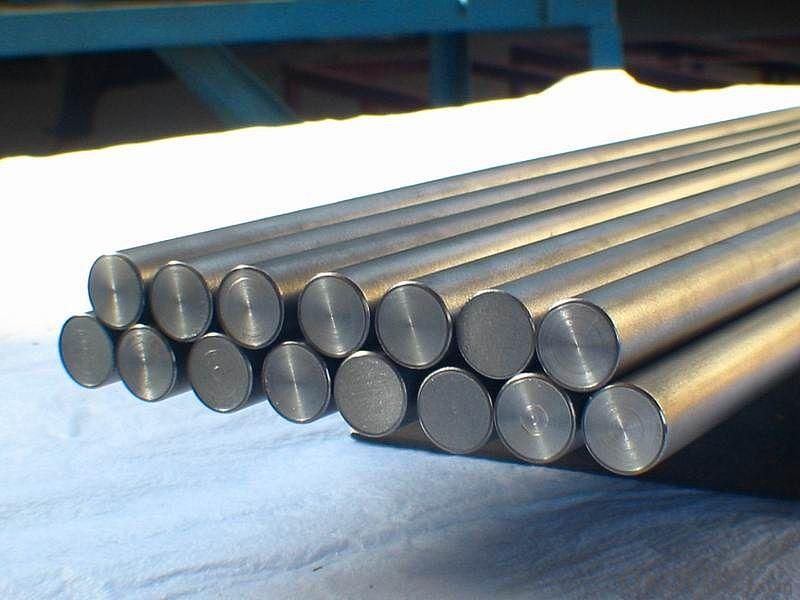
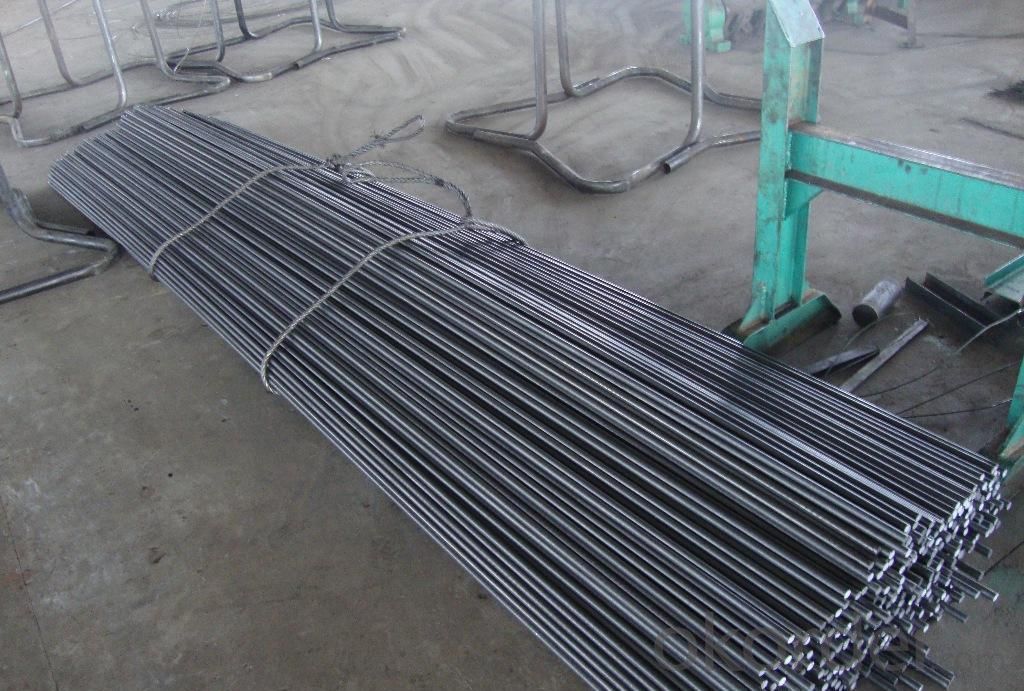
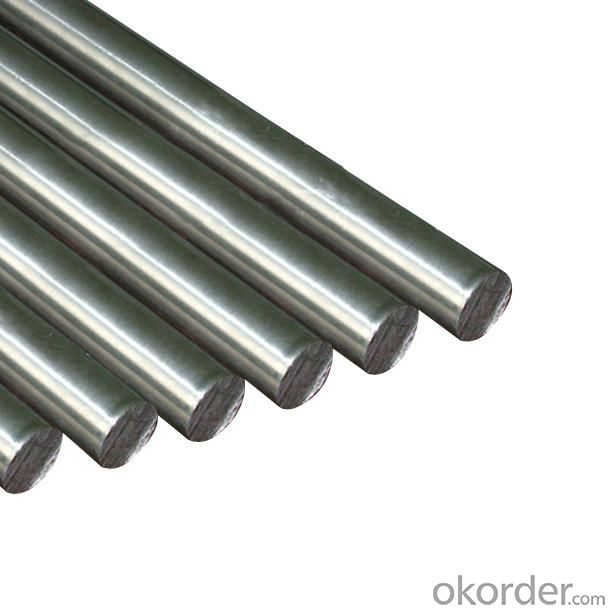
- Q: What are the typical price ranges for steel round bars?
- The typical price ranges for steel round bars vary depending on factors such as the diameter, length, grade, and market conditions. However, generally speaking, the price range for steel round bars can range from $0.50 to $3 per pound or more.
- Q: What are the advantages of using steel round bars over other materials?
- Steel round bars have numerous advantages compared to other materials: 1. Strength and durability: Known for their remarkable strength and durability, steel round bars are perfect for a wide range of applications. They can withstand heavy loads and resist deformation, making them ideal for structural purposes. 2. Versatility: Steel round bars offer tremendous versatility due to their various sizes, grades, and finishes. They can be easily customized to meet specific requirements, such as different lengths, diameters, and surface finishes. 3. Cost-effectiveness: Steel round bars provide a cost-effective solution when compared to other materials. They are readily available and affordable, thanks to their abundance and efficient manufacturing processes. Moreover, their high strength-to-weight ratio allows for the use of smaller quantities of steel without compromising strength. 4. Corrosion resistance: Steel round bars can be produced with different finishes, including galvanized or stainless steel, which enhances their resistance to corrosion. This enables them to be suitable for outdoor applications or environments where they may encounter moisture or chemicals. 5. Machinability: Steel round bars are highly regarded for their excellent machinability, allowing for easy cutting, drilling, or shaping according to specific design requirements. This characteristic promotes efficient processing and reduces production costs. 6. Fire resistance: Steel is inherently fire-resistant and does not contribute to the spread of flames. Consequently, steel round bars are the preferred choice in applications where fire safety is a concern, such as construction or industrial settings. 7. Recyclability: Steel is highly recyclable, making steel round bars an environmentally friendly option. They can be easily melted down and reused to create new steel products without compromising their properties or strength. In summary, the advantages of using steel round bars over other materials include their strength, durability, versatility, cost-effectiveness, corrosion resistance, machinability, fire resistance, and recyclability. These factors make steel round bars the preferred choice in various industries, including construction, manufacturing, automotive, and infrastructure projects.
- Q: Are steel round bars recyclable?
- Yes, steel round bars are recyclable. Steel is one of the most commonly recycled materials in the world due to its high value and ease of recycling. When steel round bars reach the end of their useful life, they can be collected and sent to a recycling facility. At the recycling facility, the round bars are melted down and transformed into new steel products. This process can be repeated indefinitely without compromising the quality of the steel. Recycling steel round bars not only helps conserve natural resources and reduce waste but also saves energy and reduces greenhouse gas emissions compared to producing steel from raw materials.
- Q: How are steel round bars heat treated?
- Steel round bars are heat treated to increase their strength and hardness while also improving their mechanical properties. The heat treatment process typically involves three main steps: heating, soaking, and cooling. Firstly, the steel round bars are heated to a specific temperature, known as the austenitizing temperature. This temperature is usually above the critical temperature of the steel, which allows the material to transform into its austenite phase. The austenitizing temperature varies depending on the type of steel and the desired properties. Once the steel round bars reach the austenitizing temperature, they are soaked at this temperature for a specific duration. The soaking time allows for the complete transformation of the microstructure, ensuring uniformity and avoiding any thermal gradients within the material. The soaking time is crucial in determining the final properties of the steel. After the soaking period, the steel round bars are rapidly cooled in a process called quenching. Quenching is typically done by immersing the bars in a quenching medium, such as oil, water, or air, depending on the desired hardness and properties. The quenching process rapidly cools the bars, causing a martensitic transformation in the steel's microstructure. This transformation results in increased hardness and strength. Following quenching, the steel round bars may undergo an additional step called tempering. Tempering involves reheating the bars to a lower temperature, typically below the austenitizing temperature. This step aims to reduce the brittleness caused by the quenching process while further improving the material's toughness and ductility. Overall, the heat treatment process for steel round bars involves heating to the austenitizing temperature, soaking for a specific duration, quenching to rapidly cool and harden the material, and potentially tempering to achieve the desired properties. This process allows for the customization and enhancement of the steel's mechanical properties, making it suitable for various applications.
- Q: Can steel round bars be used in manufacturing equipment?
- Yes, steel round bars can be commonly used in manufacturing equipment due to their high strength, durability, and versatility. They are often utilized as structural components, axles, shafts, and other critical parts in various industries such as automotive, construction, and machinery.
- Q: Could you tell me what is the difference between steel pipe and round steel?
- Widely used in the manufacture of structural and mechanical parts, such as oil drilling pipe, automobile transmission shaft, bicycle frame and steel scaffolding used in construction. Making ring parts with steel tubes can improve data application rate, simplify manufacturing process, save data and work hours, such as rolling bearings, rings, Jack sleeves, etc., and have been widely used in steel pipe manufacture.
- Q: Can steel round bars be used for valve stem applications?
- Steel round bars can indeed be utilized for valve stem applications. Their exceptional strength and durability make them a popular choice in numerous industrial settings. In valve stem applications, steel round bars are frequently employed to offer stability and structural support to the valve stem, thus guaranteeing seamless operation and enduring performance. Moreover, steel round bars can be effortlessly machined and fabricated to meet precise specifications, rendering them an adaptable option for valve stem applications.
- Q: Are steel round bars suitable for electrical conductivity?
- Steel round bars are not typically known for their electrical conductivity. Steel is a good conductor of heat but has relatively poor electrical conductivity compared to other metals such as copper or aluminum. This is because steel is primarily composed of iron, which is a poor conductor of electricity. However, the electrical conductivity of steel can be improved by adding certain alloying elements such as chromium or nickel. These alloying elements can enhance the electrical conductivity of steel, making it more suitable for specific applications where electrical conductivity is required. Nonetheless, if high electrical conductivity is a critical requirement, other materials like copper or aluminum are usually preferred over steel round bars.
- Q: Can steel round bars be used in the manufacturing of bicycles?
- Yes, steel round bars can be used in the manufacturing of bicycles. Steel round bars are commonly used in various parts of bicycles, such as the frame, handlebars, cranksets, and seatposts. Steel is a durable and strong material that can withstand the stresses and strains of cycling. It is also relatively inexpensive compared to other materials like carbon fiber. Steel round bars provide the necessary strength and stability required for a bicycle's structural components, ensuring a safe and reliable ride. Additionally, steel can be easily manipulated and shaped to meet the specific design requirements of a bicycle, making it a versatile material for manufacturing. Overall, steel round bars are a popular choice in the bicycle industry due to their durability, strength, and cost-effectiveness.
- Q: What is the maximum nickel content allowed for steel round bars?
- The maximum nickel content allowed for steel round bars typically varies depending on the specific grade and industry standards. However, in general, the nickel content in steel round bars is usually limited to around 2-3% to maintain desirable mechanical properties and prevent excessive hardening.
Send your message to us
HIGH QUALITY HOT ROLLED ROUND BAR Q235 ou Q195
- Loading Port:
- Tianjin
- Payment Terms:
- TT OR LC
- Min Order Qty:
- 25 m.t.
- Supply Capability:
- 20000000 m.t./month
OKorder Service Pledge
OKorder Financial Service
Similar products
Hot products
Hot Searches
Related keywords
